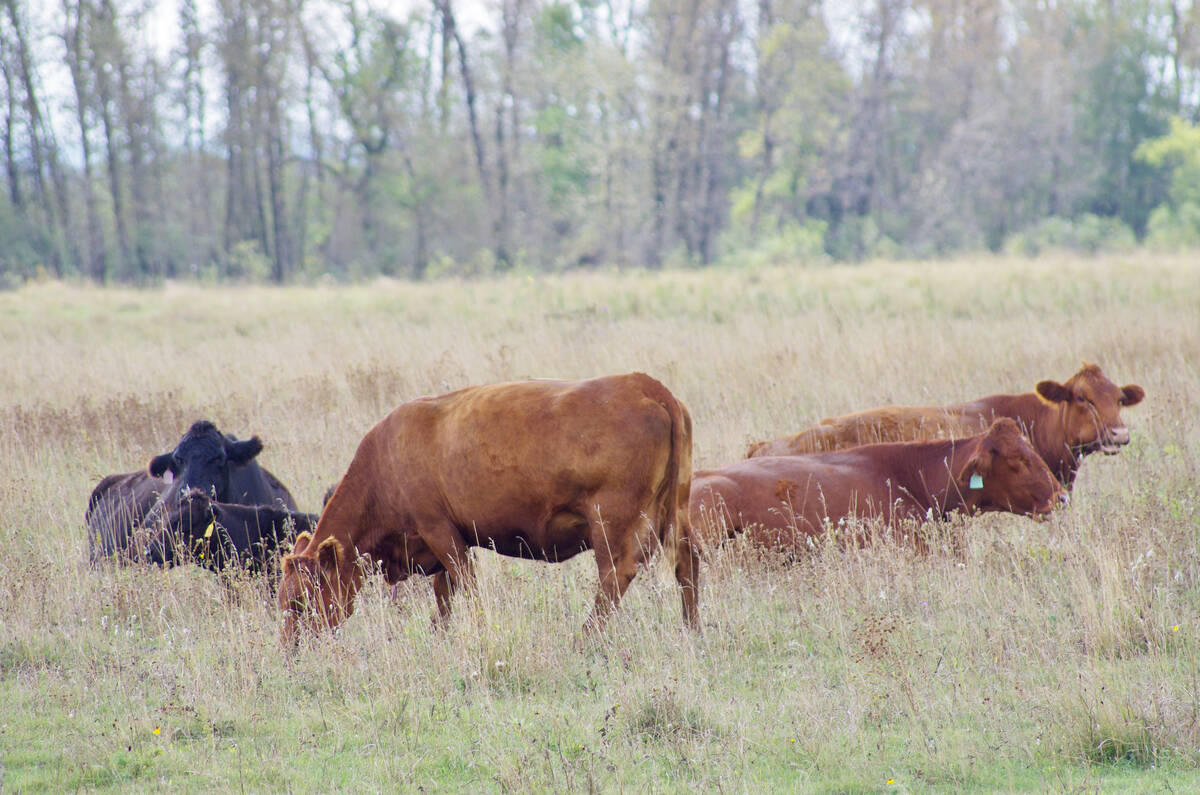Corn futures fell after rising to new contract highs on Tuesday on month-end profit taking, with the spot contract rising 20 per cent for the month to post the biggest two-month rally since the last major drought of 1988.
Gains for the months of June and July totalled 45 per cent as the worst drought in five decades continued to devastate the crop, but they were still behind 62-per cent surge in 1988.
A Reuters poll of 13 analysts showed corn production will fall to the lowest in six years at 11.2 billion bushels, with yields seen at 129 bushels per acre — the lowest in 14 years.
Read Also

U.S. livestock: Chicago cattle futures climb on post-Thanksgiving trade
Chicago | Reuters – Chicago Mercantile Exchange’s live and feeder cattle futures ticked up on Friday in a day of…
Soybean production was seen at 2.834 billion bushels, the smallest in four years, while the yield was seen at 38.1 bushels per acre, the lowest in nine years.
The numbers compare dramatically with estimates from the U.S. Department of Agriculture, which has pegged corn yield at 146 bushels and production at 12.97 billion bushels, and soybean yield at 43.9 bushels per acre and output at 3.050 billion.
The USDA will update its crop estimates in its much-anticipated supply-demand report on Aug. 10, when analysts are expecting the department to sharply reduce the number of acres that will go unharvested by farmers due to drought damage.
Analysts said that while drought damage to the corn crop was nearing an end with much of the plants past the pollination stage, hot and dry weather forecast in the Midwest farm belt the next two weeks could shrink the soybean crop even further.
Wheat prices at the Chicago Board of Trade tumbled, falling more than 2 per cent on profit-taking after the market’s 36 per cent surge over the past six weeks.
Russian Prime Minister Dmitry Medvedev’s statement that the country will not curb wheat exports despite a short crop this year also weighed on the market.
"Medvedev said there is not going to be an embargo," said grains analyst Dan Manternach of Doane Advisory Services in St. Louis, Missouri, alluding to speculation that Russia would curb exports as it did in 2010 after its worst drought in decades.
Trading in soybeans was volatile with prices moving in a wide 34-cent range in the November contract on profit taking and bulls protected their positions amid forecasts for more hot and dry weather in the Midwest farm belt.
"We are continuing to see a deterioration of the crops," grains analyst Karl Setzer of MaxYield Cooperative in West Bend, Iowa, said, referring to the U.S. Department of Agriculture’s crop progress report issued on Monday.
The report said 24 per cent of the domestic corn crop was in good-to-excellent condition as of Sunday, down from 26 per cent the previous week. That was a tad better than trade expectations for a 3-point drop. The soybean crop was 29 per cent in that category, down from 31 per cent in the previous week.
These ratings were the worst for those crops since the last major drought in 1988.
CARGILL ADDRESSES ETHANOL DEBATE
Gregory Page, chief executive of agricultural powerhouse Cargill Inc, added his voice to the debate over the usage of corn to produce the biofuel ethanol in the wake of the sharply higher grain prices.
"If all of that (demand rationing) is only on livestock or food consumers, it really makes the burden disproportionate. What we see are 3 or 4 per cent declines in supply lead to 40 to 50 per cent increases in prices, and I think the mandates are what drives that price elasticity which I think needs to be addressed," he said on CNBC.
On Monday, livestock and poultry associations called on the government to waive the mandate that essentially requires blenders to turn more than one-third of the domestic corn crop into ethanol, a policy aimed at reducing U.S. dependence on foreign oil.
December corn fell 1.1 per cent to end at $8.05-1/4 per bushel, after setting a contract high of $8.20-1/2, as traders booked profits on the last day of the month. September was down 1.7 per cent at $8.06-1/2 but within sight of the record high $8.28-3/4 set on July 20.
November soybeans fell 0.2 per cent to $16.41 a bushel. September wheat was down 3 per cent at $8.88-1/4.
Corn and wheat prices have risen about 50 per cent in the last six weeks and soybeans by around 20 per cent as U.S. crops got scorched by heat and drought.
Meteorologist said there would be little relief for the corn and soybean crops over the next two weeks in the Midwest.
"About two-thirds of the belt will remain dry for at least 15 days. There will absolutely be more declines in conditions," said Don Keeney, a meteorologist for MDA EarthSat Weather.














